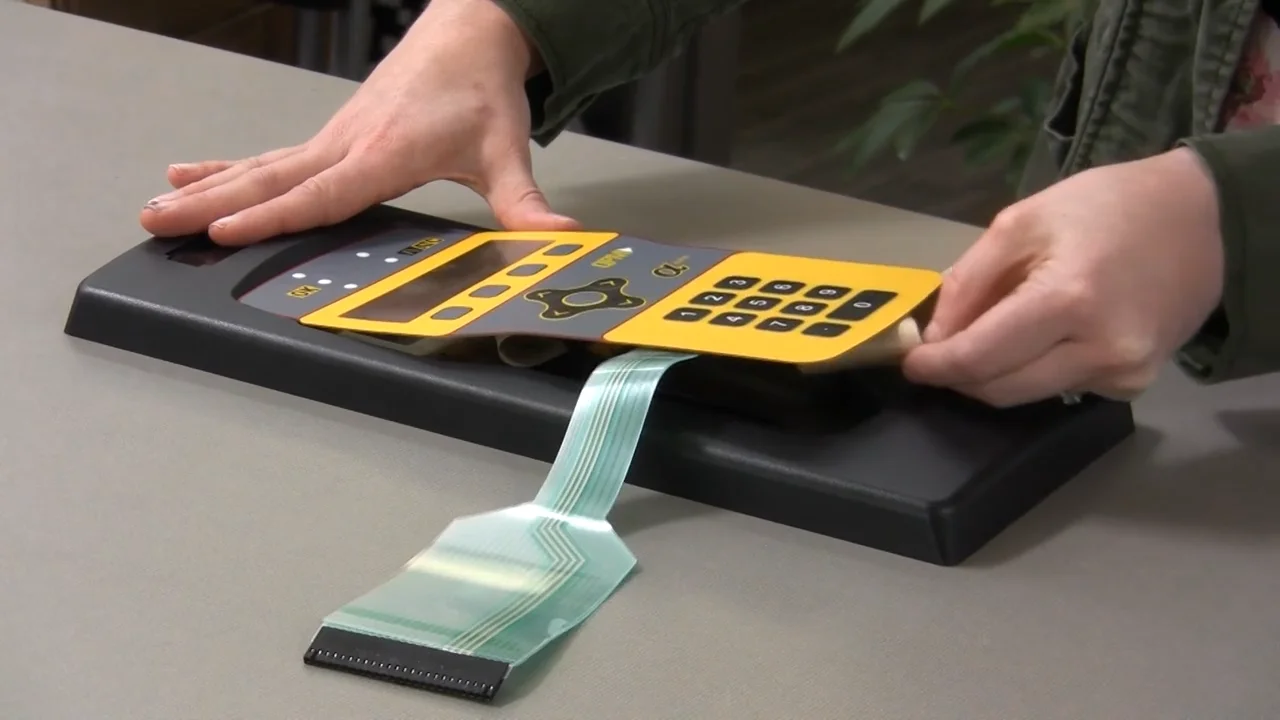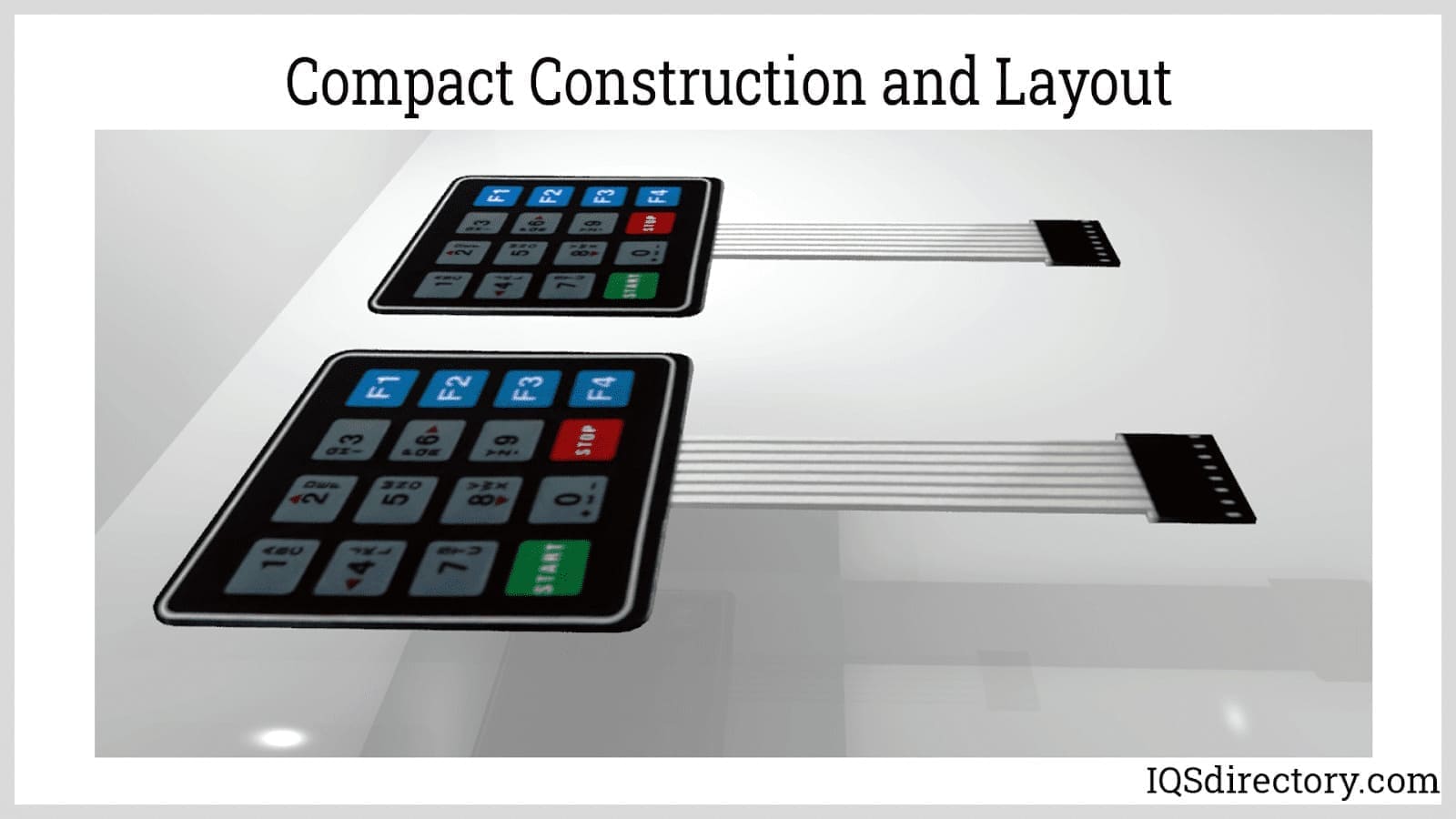Discover Exactly How a Membrane Switch Boosts Sturdiness and Functionality in Instruments
Discover Exactly How a Membrane Switch Boosts Sturdiness and Functionality in Instruments
Blog Article
Recognizing the Capability of Membrane Layer Changes for Individual Interface Gadget
The capability of membrane layer switches stands for a significant development in customer interface style, combining efficiency with visual convenience. As industries significantly prioritize user experience, understanding the nuances of membrane layer button innovation comes to be vital.
What Are Membrane Layer Switches?
Membrane layer buttons are cutting-edge interface gadgets that help with individual communication with electronic tools. These functional components are composed of several layers, consisting of a graphic overlay, spacer, and a printed circuit layer. The layout permits a smooth assimilation into different electronic tools, boosting both the aesthetic and practical elements of interface.
Membrane switches are commonly used in a wide variety of applications, from family home appliances to commercial machinery and clinical devices. Their construction generally features a slim profile, making them an excellent choice for compact layouts. The responsive comments offered by these switches can be engineered to satisfy details user choices, ensuring efficient communication between the individual and the device.
Sturdiness is one more significant advantage of membrane layer switches, as they are resistant to dust, dampness, and chemicals, which improves their life-span sought after environments. Furthermore, these switches can be personalized in regards to form, size, and graphic style, permitting branding and user-specific functions. On the whole, membrane switches over represent a useful option for boosting individual experience in digital tools, incorporating performance with aesthetic allure in a reliable manner.
Exactly How Membrane Layer Changes Work
Operating on an uncomplicated concept, membrane changes use a layered construction to register user input successfully. Each switch contains several layers, consisting of a published circuit layer, a spacer layer, and a top visuals layer, which are designed to work with each other flawlessly. When an individual presses the leading layer, it presses the spacer layer, bringing the conductive components of the circuit layer right into contact with each other.
This call produces a shut circuit, indicating the tool to carry out a specific function. The design permits for numerous setups, including responsive feedback, which can enhance the individual experience by supplying a physical feeling upon activation. The materials used in membrane buttons often consist of versatile substrates, such as polyester or polycarbonate, which make certain sturdiness and strength against deterioration.

Trick Advantages of Membrane Layer Switches

One more see page significant benefit is their density. Membrane layer switches are thin and light-weight, which makes it possible for makers to conserve space in their gadgets without compromising performance. This feature is particularly beneficial in applications where weight and volume are important considerations.
Furthermore, membrane layer buttons are immune to dirt, moisture, and chemicals, enhancing their toughness. This resilience prolongs their life-span and decreases the demand for frequent substitutes, resulting in cost financial savings with time.
Moreover, the tactile feedback offered by membrane buttons can be enhanced to boost user interaction. They can consist of attributes such as elevated switches or audible clicks, boosting use and customer experience.
Applications Throughout Industries
Interface devices using membrane switches prevail in a large range of markets, showcasing their adaptability and performance. Membrane Switch. In the medical industry, membrane switches are integral to gadgets such as analysis equipment and person monitoring systems, where their sturdiness and convenience of cleansing are important for maintaining hygiene criteria. In the automotive industry, these switches are used in control panel controls and infotainment systems, supplying a smooth and modern-day user interface for customers.
Furthermore, the consumer electronic devices field benefits from membrane buttons in devices and handheld gadgets, where compact design and user-friendly user interfaces boost user experience. Industrial applications likewise leverage membrane switches over for control board in machinery and automation systems, stressing their effectiveness and resistance to harsh settings.
In the aerospace and defense industries, membrane layer buttons are utilized in cockpit controls and devices, where reliability and performance under severe conditions are extremely important. In addition, the gaming sector significantly integrates membrane layer buttons in controllers and game makers, adding to an interesting user experience. Generally, the versatility of membrane switches allows their prevalent use across numerous fields, highlighting their relevance in modern-day customer interface design.
Future Fads in Membrane Layer Switch Technology

Furthermore, making use of innovative materials, such as polycarbonate and polyester movies, is expected to rise, giving enhanced longevity and resistance to environmental stress factors. These materials add to the total longevity of membrane layer switches, making them suitable for harsher industrial applications.
Additionally, the consolidation of smart innovation, including IoT connection, will certainly enable membrane buttons to interact with other gadgets and systems, helping with a much more interactive individual experience. This pattern straightens with the growing need for wise devices throughout various sectors, from health care to customer electronics.
Finally, customization alternatives are anticipated to increase, allowing producers to produce bespoke remedies tailored to details customer requirements and preferences. These developments will position membrane layer buttons as important elements in the advancement of interface modern technology.
Verdict
In conclusion, membrane switches over stand for a critical innovation in individual interface technology, using a reliable and functional option for varied electronic applications. As developments in product science and touch picking up innovations continue, the performance and applicability of membrane layer buttons are anticipated to expand, strengthening their importance in modern-day electronic devices.
Report this page